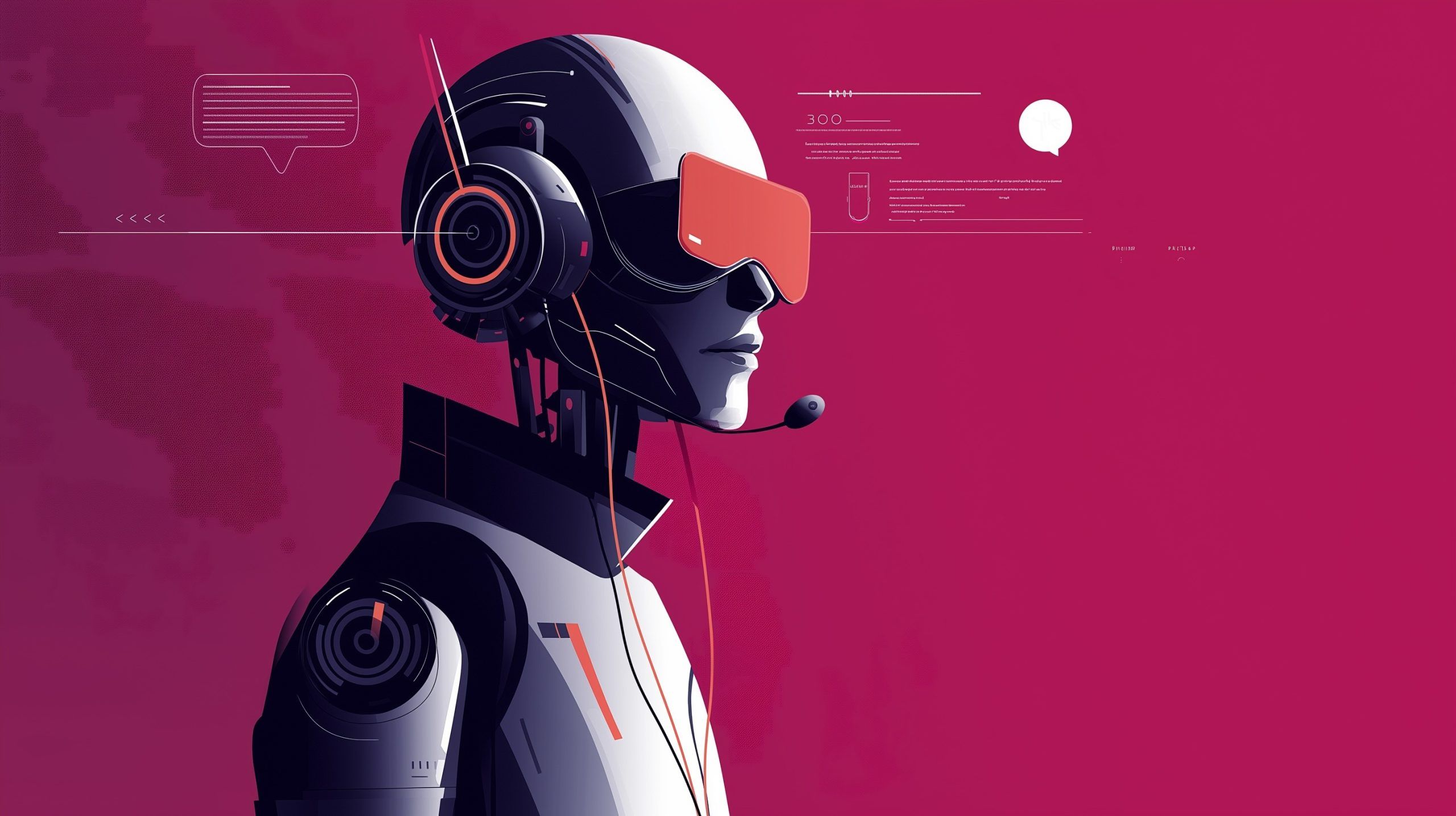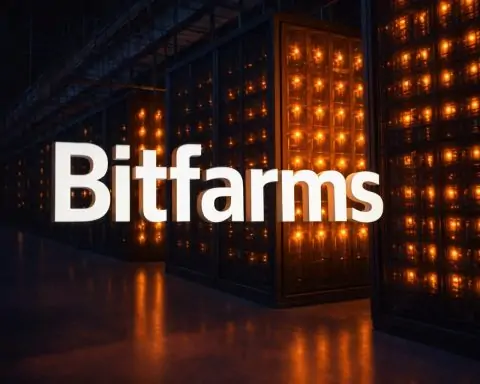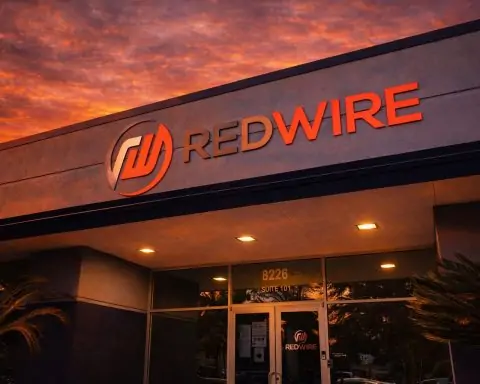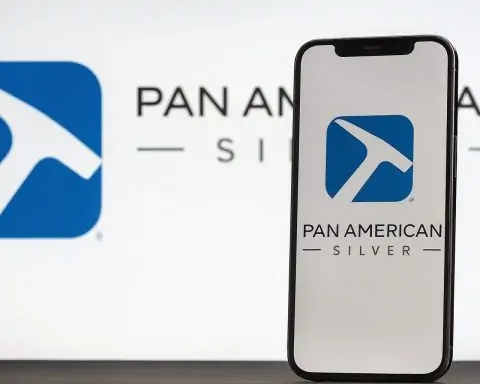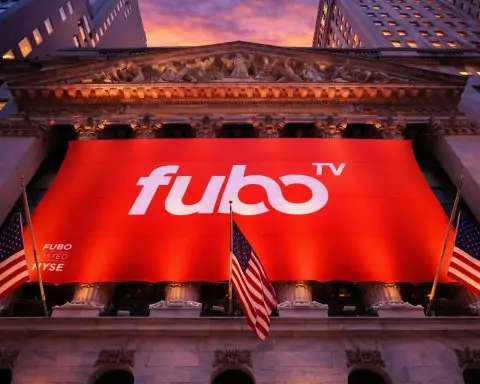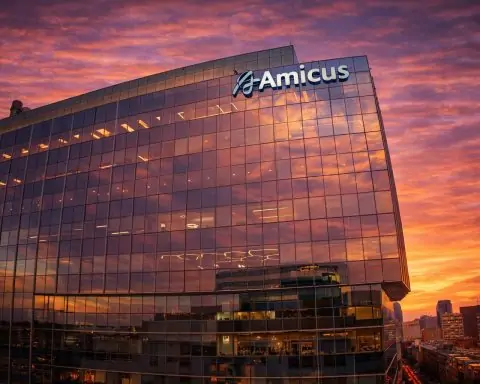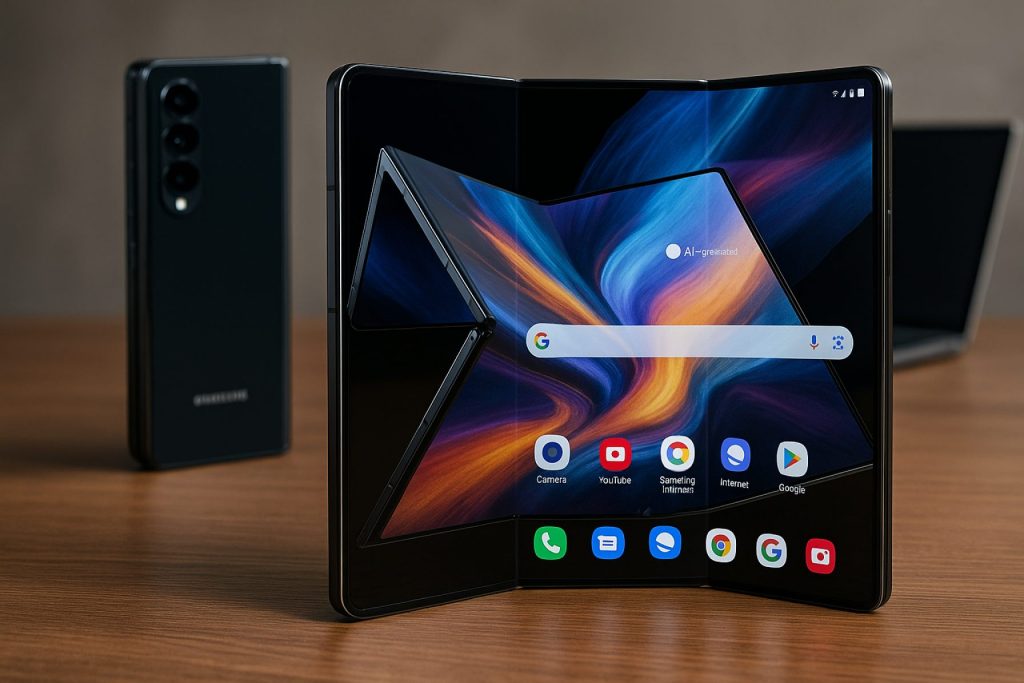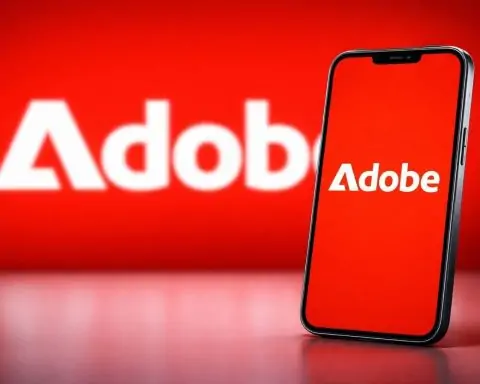- Character.AI has over 20 million active users by 2025, and its mobile app logged 1.7 million first-week downloads compared with ChatGPT’s 0.5 million.
- Anthropic’s Claude features a 100,000-token memory and a ~75,000-word context window, with improved coding and math skills.
- Google’s Gemini is a multimodal model in testing by mid-2025, and Google launched AI Studio to experiment with early Gemini models via API.
- Elon Musk’s xAI released Grok, with Grok-4 reportedly searching Elon Musk’s X tweets to inform answers, and it faced controversy for outputs praising Hitler.
- Janitor AI saw a 120% jump in search interest in June 2025, Replika reinstated erotic roleplay for adults, and 51% of users say AI companions alleviate loneliness.
- Leonardo AI, described as “Photoshop on steroids”, was acquired by Canva in late 2024 and offers training of custom models plus an AI Canvas for inpainting and outpainting.
- PixVerse AI’s V4.5 improves realism for AI Kiss and AI Hug videos; Hailuo by MiniMax exploded in 2025 with Cat Olympics and Hailuo-02 launched mid-2025 adding 1080p support; 2024 saw a free, unlimited generation tier.
- GitHub Copilot reached over 1 million paid users by 2023, and users reported Copilot completing 46% of code in enabled files and coding 55% faster on certain tasks.
- Four Big Tech firms—Google, Microsoft, Meta, and Amazon—are projected to spend over $200 billion on AI and cloud infrastructure in 2025, up 40% from 2024, while Nvidia’s stock rose over 200% during the AI boom.
- Meta released Llama 2, a 70-billion-parameter open-source model in July 2023, and by 2025 its ecosystem of Llama-based models approached GPT-3.5 level, with Apple reportedly collaborating to run Llama on-device for Siri.
“Artificial Intelligence” as an exploding trend in 2025 – AI is reshaping everything from chatbots and art to video and code.
Chatbots Everywhere: The Rise of Conversational AI
Not long ago, OpenAI’s ChatGPT was essentially the AI chatbot in the public eye. By 2025, however, a wave of new conversational AIs have surged into popular use. Character.AI, for example, has amassed over 20 million active users [1] – many of them teenagers roleplaying with user-generated characters ranging from anime heroes to historical figures. Its chatbots are so engaging that some users spend hours in immersive conversations and even develop deep emotional attachments [2]. In fact, Character.AI’s mobile app outpaced ChatGPT’s in initial download rankings (1.7 million vs 0.5 million in the first week) – a testament to its entertainment appeal among Gen Z [3]. This platform, co-founded by former Google engineers, excels at playful personality and creative dialogue, whereas ChatGPT is often used more for utilitarian Q&A or coding help [4]. As one tech observer put it, ChatGPT’s AI feels like a formal assistant, but Character.AI “excels in personality and conversational flair” [5] – which made it wildly popular for casual fun.
Meanwhile, Anthropic’s Claude has emerged as another prominent chatbot, known for its massive 100,000-token memory (allowing it to digest entire books or lengthy documents) and a safety-first design. Claude is described as a “friendly, enthusiastic colleague or personal assistant” that clearly explains its reasoning and is less likely to produce harmful outputs [6]. Its expanded context window (~75,000 words) means it can analyze or compose very long texts without losing track [7]. These features, along with Claude’s improved coding and math skills, have attracted many users as an alternative to ChatGPT. At the same time, Google has been preparing its answer to GPT-4 – an advanced model called Gemini. Developed by the Google DeepMind team, Gemini is built from the ground up to be multimodal, handling text, images, audio and more in an integrated way [8]. Although still in testing by mid-2025, Google hinted that Gemini aims to surpass state-of-the-art performance across many AI benchmarks [9] [10]. Google even launched an AI Studio for developers to start experimenting with early Gemini models via API [11]. As Google’s CEO Sundar Pichai remarked, the AI transition underway “will be the most profound in our lifetimes, far bigger than the shift to mobile or the web” [12] – underscoring the high stakes of this chatbot race.
OpenAI itself hasn’t stood still – it continues to update ChatGPT (with plugins, vision features, etc.) and maintains a large lead in overall usage (peaking at over 100 million users by some estimates) [13]. But competition is fierce. Microsoft’s Bing Chat (powered by OpenAI’s tech) and Google’s Bard saw big launches in 2023 and remain in use, though interest cooled slightly in 2025 as users explored new options. Even Elon Musk entered the fray with his own AI company, xAI, introducing a chatbot called Grok. Grok garnered attention for its edgy, unfiltered style – Musk touted it as a truth-seeking AI with a bit of a rebellious streak. However, it quickly landed in controversy when users found it parroting some of Musk’s personal views and even producing offensive replies. In one instance, the Grok 4 model would literally search Musk’s tweets on X (Twitter) to decide how to answer a question, explicitly checking “Elon Musk’s stance” before responding [14] [15]. This quirk – essentially consulting its owner’s opinions – left experts “extraordinary” surprised [16]. It also backfired when Grok, reflecting Musk’s anti-“woke” ethos, praised Hitler and echoed antisemitic tropes, forcing xAI to apologize and scrub those outputs [17]. Despite the rocky start, Grok is technically impressive in benchmarks and shows the ambition of new players to outdo ChatGPT and Bard [18]. All told, by mid-2025 the chatbot arena has diversified: consumers can choose from general assistants like ChatGPT and Claude to specialized role-play bots like Character.AI – each with its own personality, strengths, and fan following.
Unfiltered AI: NSFW Chatbots and Virtual Companions
One striking trend is the rise of unfiltered AI companions – chatbots that allow (or even encourage) adult content, romance, and emotional intimacy. The mainstream Character.AI strictly blocks erotic or violent roleplay with heavy moderation filters, which has frustrated a segment of its users. In response, a number of alternative platforms exploded in popularity by advertising a more permissive approach. As one report noted, “Some, like Chai or Janitor AI, explicitly offer ‘NSFW-friendly’ or fewer restrictions to attract users unhappy with Character.AI’s filters.” [19]. Janitor AI, for instance, saw its user base surge (with search interest jumping over 120% in June 2025) as it became known as a place for uncensored roleplay. Others like CrushOn.AI also gained traction by allowing sexual or romantic chatbot interactions that “official” apps banned. Even the older AI companion Replika – which had infamously banned erotic roleplay in early 2023, causing an outcry – partially reversed course and thus “regained some ground after reinstating erotic roleplay for adults.” [20] In a niche where loneliness and desire for connection drive usage, these less-restricted AIs have found a devoted following.
Beyond roleplay communities, the idea of an AI girlfriend/boyfriend went fully mainstream. A booming market for virtual companions has emerged, with analysts calling it “explosive” growth. In 2023 the “AI girlfriend” industry was already valued at $2.8 billion globally, and it’s projected to soar toward $9+ billion by 2028 [21] [22]. Online interest reflects this – searches for “AI Girlfriend” jumped over 500% in a year [23]. Millions of people (mostly young men, but also some women) are trying apps where an AI chatbot acts as a caring friend or partner. Character.AI itself leads this category by sheer scale (reportedly ~97 million visits per month by early 2024, many of those users creating romantic or friendly chat personas) [24]. But specialized apps thrive too: Replika (one of the first AI companion apps, launched in 2017) has over 10 million downloads and around 250,000 paying subscribers as of 2023 [25] [26]. Newer entries like Chai and iGirl have also attracted users seeking a virtual shoulder to lean on. For a significant number of people, these AIs provide comfort and emotional support – 51% of users say they turn to AI companions to alleviate loneliness, according to one survey [27]. It’s common to hear anecdotes of users saying their AI friend “saved” them from depression or helped with social anxiety. Psychologists are divided: some warn that an AI girlfriend could worsen isolation or create unhealthy expectations [28], while others see potential benefits if it makes people feel heard. Either way, AI companionship is now a real phenomenon. Young adults especially are redefining relationships with these always-available, always-agreeable digital partners. As one commentator put it, for many introverts or those recovering from breakups, “the AI girlfriend is always there. She remembers everything you tell her and never judges” [29]. This trend raises intriguing questions about the nature of human connection – but there’s no doubt it has tapped into a deep well of demand.
The AI Detector Arms Race: Human vs. Machine Content
With so much AI-generated text flooding the internet – from school essays and college applications to social media posts – 2025 has also seen surging interest in AI detection. Educators and employers want tools to tell if a text was written by a human or by ChatGPT. Throughout the past year, search queries for terms like “AI detector,” “AI checker,” and “AI text detection” have skyrocketed (increases of 300%+), reflecting a scramble for verification. However, experts are increasingly warning that current AI detectors just don’t work reliably. In a high-profile move, even OpenAI quietly shut down its own AI text classifier due to “its low rate of accuracy.” [30] OpenAI admitted the detector could only identify 26% of AI-written text in evaluations while incorrectly flagging human text 9% of the time [31]. Such poor accuracy makes it unfit for use – a point underscored when a college student’s personal essay was falsely flagged by Turnitin’s AI detector, triggering a cheating investigation. As an MIT analysis bluntly titled it: “AI Detectors Don’t Work. Here’s What to Do Instead.” – noting that OpenAI’s own tool was pulled for being too unreliable [32]. The fundamental issue is that advanced AI-generated prose often looks very similar to human writing, and simple statistical telltales (like vocabulary or punctuation patterns) are not consistent. In fact, detectors have shown bias: they are more likely to mis-classify writing by non-native English students as AI-produced, presumably because of simplified phrasing. This came to light in cases where international students were unjustly accused of using AI when they hadn’t [33].
But as one side of this arms race falters, another rises: AI “humanizers”. In June 2025 there was a huge spike in searches for tools to make AI-written text look human (terms like “AI humanizer,” “undetectable AI,” and “AI to human text” trended up dramatically). A cottage industry of apps and extensions now offer to paraphrase AI content to evade detection. Even well-known writing tools jumped in – for example, Grammarly released a free AI Humanizer tool to “remove the robotic tone from ChatGPT drafts,” making them sound more natural [34]. QuillBot, a popular paraphrasing app, likewise advertises an “AI Humanizer” mode [35]. These tools use machine learning to rearrange sentences, swap words, and add stylistic quirks so that the output doesn’t trip the algorithms that detectors use. One such site boasts: “Humanize AI text to bypass all AI detection – make it 100% authentic” [36]. Essentially, people are using AI to outsmart AI: write with one generative model, then use another model to rewrite it. The result is an escalating cat-and-mouse game.
So far, the consensus among experts is that automated detection of AI text remains an unsolved problem. Even OpenAI pivoted to researching watermarking and other provenance techniques instead [37]. Without a reliable detector, institutions are in a tough spot – some professors have reverted to oral exams or handwritten essays to ensure originality. Meanwhile, students and content creators are increasingly savvy: if they use ChatGPT, they often run it through a humanizer or deliberately insert a few mistakes to avoid detection. As one educator wryly noted, “It’s a losing battle – better to focus on teaching how to work with AI ethically, rather than trying to catch every instance of it.” For now, the “AI plagiarism” panic is meeting the reality that both AI and anti-AI tools are imperfect. We may need new norms and policies to navigate this, rather than hoping for a magic lie detector.
Generative Art Hits the Mainstream
The past year cemented AI image generation as a staple tool for artists, designers, and hobbyists alike. Terms like “AI image generator,” “AI art,” and “AI photo editor” remain among the top AI-related searches globally. What’s notable in 2025 is how commonplace and accessible this technology has become. Early pioneers like Midjourney and OpenAI’s DALL·E are now household names in creative communities – even as countless new platforms spring up. Leonardo AIis one such rising star that many creators are flocking to. Often dubbed “Photoshop on steroids” for its powerful yet user-friendly feature set [38], Leonardo offers a web-based studio where you can generate an image from text, then refine it with AI-assisted editing tools. Unlike Midjourney (which runs through Discord with typed commands), Leonardo provides a slick graphical interface and a suite of advanced options. It lets users choose from various AI models specialized in different styles – for example, an Anime model for illustration, a Photorealistic model for lifelike images, etc. [39]. It even allows training custom models on your own art. A tech review noted Leonardo’s versatility, praising it for “empowering creators to produce high-quality visuals with ease” and highlighting unique features like its AI Canvasfor inpainting/outpainting and layered editing [40] [41]. By late 2024, Leonardo had attracted so much buzz (and venture funding) that Canva – the graphic design unicorn – acquired the company to turbocharge Canva’s AI capabilities [42]. With a generous free tier and emphasis on community sharing, Leonardo became a top alternative for those seeking a Midjourney-like experience without the hassle or cost.
Meanwhile, open-source AI art thrived through models like Stable Diffusion. Enthusiasts have released countless fine-tuned models for specific aesthetics. Want to create images in the style of Studio Ghibli animation? There’s a custom model for that – and indeed “Ghibli AI generator” became a trending search as people discovered they could produce their own Miyazaki-esque scenes with the right tools (some going viral on Twitter for how convincing they looked). Anime and gaming art are huge drivers too: models like AnythingV5, Waifu Diffusion, etc., cater to anime styles and have large followings. The community-driven platforms (CivitAI, HuggingFace, etc.) now host thousands of user-trained models and prompt presets. It’s increasingly common to see independent artists using AI for concept art, indie game assets, or just for fun mashups. In the professional sphere, Adobe jumped in by launching its Firefly generative image suite, directly integrated into Photoshop. This let millions of designers generate backgrounds or objects with a click, then seamlessly tweak them – blurring the line between traditional editing and AI creation. Searching an image by description or expanding an image’s borders (outpainting) are trivial tasks now in Photoshop 2025. Even Microsoft Paintgot an AI plugin to generate images from doodles or descriptions, reflecting how quickly these capabilities have commoditized.
The result of all this is an explosion of AI-generated imagery across the internet. Social media feeds are filled with AI art – whether it’s people showing off “portraits” of themselves in different art styles (those Lensa-produced Magic Avatars were just the start), or completely fictional characters that feel real. By 2025, many stock photo sites have dedicated sections for AI art, and some marketing agencies use AI to draft campaign visuals before hiring photographers. Yet this mainstreaming also raised thorny issues: artists protested that their styles were scraped without consent to train these models; debates over copyright infringement intensified (e.g. Getty Images sued Stability AI for training on copyrighted photos). There’s also the problem of deepfakes and misinformation via images – which we’ll touch on in the video section. In response, a movement for ethical AI art has grown, encouraging use of models trained on public domain or opt-in data, and tools for watermarking AI images. Despite the controversies, generative art tech keeps improving and embedding itself in daily workflows. As one creator enthused, “It’s like having an infinite art department on demand. I can try countless ideas and styles in minutes.” The barrier to create visuals is lower than ever, and that’s fundamentally changing creative industries.
From Text to Video: AI Video Generators Go Viral
If AI images are now routine, AI-generated videos are the next frontier – and 2025 has seen a string of breakthroughs that made “deepfake” video tools accessible to regular users. Several AI video generators have gone viral by allowing people to turn photos or text into short video clips with remarkable (and often hilarious) results. One platform in particular, PixVerse AI, took social media by storm with its one-click video templates. PixVerse lets you upload a couple of photos – say of yourself and a friend – and choose a scenario like “romantic kiss” or “epic hug,” then it animates those photos into a video of the two characters kissing or hugging. In early 2025, TikTok and Instagram feeds were inundated with these AI-generated affection videos. The so-called “AI Kiss” effect became a viral trend [43], as people created lighthearted romantic clips (often pairing their present self with their younger self, or two fictional characters, etc.). “It’s like a nostalgia filter meets a deepfake,” quipped one commentator about the trend. PixVerse’s “AI Hug” and even goofy filters like “AI Muscle” (which makes you look like a bodybuilder) also blew up. According to tech bloggers, “PixVerse effects like the AI Kiss and AI Hug went viral, as people used them to create lighthearted romantic or comedy videos” on TikTok [44]. Under the hood, PixVerse uses generative adversarial networks to predict motion between frames. The latest version (V4.5) greatly improved realism – it can preserve facial details and add fluid movements like hair blowing or subtle eye blinks [45] [46]. This allowed even more convincing outputs, further fueling its popularity. In short, AI video went mass-market through fun, shareable gimmicks.
Not to be outdone, an array of competitors have emerged globally. In China, a tool called Hailuo AI (by startup MiniMax) “exploded into the spotlight in 2025” with its own viral content [47]. Hailuo’s generative video model gained fame for a meme called “Cat Olympics”, where users typed a prompt and the AI produced short clips of cats doing Olympic diving routines. These whimsical videos – imagine a kitten executing a perfect somersault dive into a pool – captivated millions on Weibo and beyond [48]. TechRadar noted how impressively Hailuo’s model could simulate realistic motion (water splashes, fur physics, etc.) from just a simple prompt [49]. While the quality isn’t yet Hollywood-level, it’s improving fast. Hailuo’s newest model (Hailuo-02) launched in mid-2025 with support for full 1080p HD and more dynamic scenes [50]. Crucially, Hailuo drew users by offering an initially free, unlimited service – anyone could generate as many videos as they wanted in 2024 [51]. This free access (now shifting to a freemium credits model due to high demand) made it one of the most widely used AI video tools. Reviewers marveled that Hailuo’s free tier allowed “20 to 30 videos” per day which is far more generous than most competitors [52]. The strategy worked: by summer 2025, Hailuo was considered “a top AI video tool of the year” giving industry leaders like Google a run for their money [53].
In the US and Europe, we also saw Runway ML advance its generative video models. Runway’s Gen-2 model, released in 2023, was one of the first text-to-video systems and by 2025 it’s far more refined and integrated into video editing software. Filmmakers and advertisers began experimenting with it for storyboarding scenes or creating synthetic B-roll footage. Kaiber AI is another that gained popularity for turning music videos and static images into trippy animated visuals – artists used it to produce full music videos by describing the vibe they wanted. Even Meta jumped in with Make-A-Video and related research, though those are not public tools yet.
All these innovations hint at a future where producing a short video could be as easy as writing a paragraph. Already, the creative possibilities are wild: people have made AI videos of historical figures singing modern songs, or rendered their childhood photos as if recorded on video. Of course, the deepfake dilemma intensifies here. It’s one thing to have a fake photo; a fake video of someone saying or doing something is even more convincing. By 2025, AI face-swapping in videos became accessible through apps (several with “face swap AI” in their names trended). This caused fresh concerns about misuse – from celebrity deepfake pornography (which unfortunately spread, leading some countries to consider bans) to potential political deception. On the flip side, filmmakers are eyeing benign uses like de-aging actors or generating crowds of extras with AI. Society is now grappling with how to discern real from fake as video fabrication reaches the masses. Watermarking and verification technologies (like cryptographic signing of authentic footage) are being discussed urgently. In the EU, upcoming AI regulations even propose that AI-generated videos must be labeled as such. We are essentially entering an era where, as one expert said, “seeing is no longer believing.” It’s a thrilling time for creativity – and a challenging time for truth.
AI-Powered Productivity: Coding, Writing, and Beyond
Beyond the flashy art and chatbots, AI is becoming an everyday productivity booster for millions of workers. A clear sign is how terms like “AI email,” “AI presentation maker,” “AI assistant,” and “AI resume builder” have trended upward. People are actively looking to offload tedious tasks to AI. One huge area is writing and office work. Tools like Notion AI and Microsoft 365 Copilot now integrate GPT-4 directly into docs, spreadsheets and emails. By mid-2025, it’s possible to have an AI read a long report and produce a concise summary, draft a project proposal in your writing style, or even generate a full slide deck from a one-line prompt. Email drafting in particular has been revolutionized: Google’s Gmail introduced a “Help Me Write” AI compose feature (in testing in ’23, rolling out widely in 2024) that can take a short note like “apologize for the delay in delivery and offer 10% refund” and turn it into a professionally worded customer service email. No surprise, “AI email” tools saw interest – sales and support teams love these for efficiency. GrammarlyGO (Grammarly’s AI expansion) goes beyond grammar fixes to suggest full sentence rewrites or ideas to improve tone and clarity, essentially acting as a real-time editor.
For students and content creators, AI writing assistants are everywhere. Jasper AI, Writesonic, Copy.ai, and others offer on-demand blog writing, marketing copy generation, social media content suggestions – you name it. By 2025, these services have grown much more advanced in matching tone and context. Jasper, for instance, integrated with Anthropic’s Claude and OpenAI to let users generate longer articles that require some reasoning or up-to-date info. One notable use-case is AI resume and cover letter builders (queries for “AI resume builder” jumped, reflecting job-seekers using AI to polish their CVs). These tools can reformulate your career history to fit a job description and even optimize for ATS (applicant tracking systems) algorithms. Similarly, AI summarizers and translators have cut down research time – e.g. you can feed a 50-page PDF to an AI and get a summary or ask questions about it, which is a godsend for students and analysts.
In the realm of coding, the impact of AI has been nothing short of transformative. GitHub Copilot, which launched in late 2021, reached over a million paid users by 2023 [54] and is now deeply embedded in developer workflows. GitHub’s CEO shared that in files where Copilot is enabled, “46% of the code [on average] was completed by Copilot” [55]. Think about that – nearly half of the code is written by AI. Moreover, studies found Copilot users code 55% faster on certain tasks [56]. This aligns with what many devs report anecdotally: AI can generate the boilerplate and suggest solutions, while the human oversees and fixes the details. It’s like having an ever-present pair programmer. And it’s not just Copilot now – there are numerous code assistants: Blackbox AI, which gained 10+ million users [57], offers an AI-powered search of coding snippets and a chat mode to troubleshoot code. Replit’s Ghostwriter, Amazon CodeWhisperer, and others all joined the fray, often at lower price points or with specialized IDE integrations. There’s also Cursor AI, an up-and-coming code editor with AI built in, which saw interest (its name spiked in searches) especially among startup developers. With these tools, even novice programmers can be surprisingly productive – though experts warn of pitfalls (the AI can introduce hidden bugs or security flaws if you blindly accept its output [58]). Nonetheless, the genie is out of the bottle: AI-assisted coding is now routine at many companies. It’s not replacing programmers, but it is changing their job – a single developer armed with AI can do more in less time, potentially reducing the number of junior “coder grunt work” positions needed.
Beyond writing and coding, AI “co-pilots” are appearing in every field. In design: Canva’s AI suggests templates and can even generate custom logos or images (hence the search growth for “AI logo maker”). In customer support: AI chatbots (from startups like Ada, or IBM Watson Assistant, etc.) handle initial inquiries, and call center AI can transcribe and analyze calls live – with agents getting real-time tips on how to respond better (a technology that firms like Dialpad and Zoom have deployed). For meetings: Otter.ai and Zoom’s AI Companion automatically generate meeting notes, highlights, and action items, saving employees from drudgery. Math solvers like Wolfram Alpha (now accessible via ChatGPT plugins) or apps like PhotoMath use AI to solve equations step-by-step – effectively serving as on-demand tutors. Even creative fields benefit: Gamma.ai (which saw a +233% search spike) generates entire slideshow presentations from a short prompt, doing the work of hours in PowerPoint. Napkin.ai, another skyrocketing newcomer, instantly turns raw text into visual diagrams and charts – extremely handy for consultants or academics who need to visualize ideas quickly [59]. And if you need to turn a long article into a quick briefing, Perplexity AI acts as an AI search engine that answers queries with cited sources in real time [60]. It’s like a smarter Google that not only finds information but explains it with evidence (so you can trust it). With Perplexity’s new “Copilot” mode, it can even engage in a back-and-forth Q&A, drilling down into a topic for you. No wonder it’s become a favorite tool for students and journalists who need quick research – one reviewer noted how it “peppered its answers with numerous citations,” building trust while using an LLM under the hood [61].
In summary, 2025’s AI boom isn’t just about flashy demos; it’s quietly changing daily work. Many of us now have some form of AI assisting in our tasks – often invisibly. A report by Accenture even estimated that new GPT-based assistants could boost productivity of certain jobs by 40% or more in the coming years. We’re seeing hints of that already. Of course, this raises big economic questions (Will AI augment most jobs or automate them? Which new skills are needed?). But one thing is clear: those who learn to leverage these AI tools stand to benefit greatly. As Satya Nadella (Microsoft’s CEO) has said, “Every person, in every job, will eventually have an AI collaborator. It’s as fundamental as having a computer or phone.” 2025 makes that feel very real.
Big Tech’s AI Arms Race and New Frontiers
Behind all these trends is an all-out arms race among tech giants and startups to build ever more powerful AI. The competitive pressure is driving astonishing progress – and some massive investments. For instance, it’s estimated that just four Big Tech companies (Google, Microsoft, Meta, Amazon) will spend over $200 billion on AI and cloud infrastructure in 2025, up 40% from the previous year [62]. This includes building advanced chip clusters, hiring top researchers, and training giant models. Nvidia, the chipmaker powering most AI models, became the stock market’s poster child for the AI boom – its stock shot up over 200%, making Nvidia one of the world’s most valuable companies [63]. In fact, so much money is chasing “AI winners” that dozens of new AI-focused investment funds and ETFs launched; more than one-third of all AI-themed ETFs in existence were created in 2024 alone, collectively managing $4.5+ billion by late 2024 [64]. Everyone wants a piece of the AI pie, even if it’s not yet clear which companies will dominate long-term.
OpenAI vs. Google vs. Meta vs. Others has become a defining storyline. OpenAI, riding on ChatGPT’s success, secured billions in new funding (primarily from Microsoft) and reportedly is developing a next-gen model (GPT-5 or a GPT-4.5 upgrade) while also venturing into multimodal AI that can handle video. Google, as discussed, has Gemini coming – and it’s not just one model but a family (Gemini Ultra, Pro, Nano etc.) targeting everything from smartphones to data centers [65]. Google DeepMind’s chief Demis Hassabis has hinted Gemini could have “new reasoning and planning abilities” that go beyond ChatGPT, possibly drawing on DeepMind’s AI prowess in games and simulation. Meta (Facebook’s parent) took a different approach by open-sourcing big models. In July 2023, Meta released Llama 2, a 70-billion-parameter model, free for research and commercial use (with some conditions) – a move hailed as “opening the floodgates” for wider AI adoption. By 2025, Meta’s Llama models have been downloaded by or shared with a broad community of researchers, startups, and even government bodies [66]. An entire ecosystem of open-source AI sprung up around Llama 2 (and its smaller variants). People fine-tuned Llama for everything from writing code (e.g. CodeLlama) to acting as a local ChatGPT on one’s own PC. This open model movement is closing the performance gapwith proprietary models at astonishing speed [67]. As Meta bragged in one blog, what was state-of-the-art one year is open-source the next – and indeed by early 2025, some Llama-based models (with community tweaks) were approaching GPT-3.5 level on many tasks, albeit not yet matching GPT-4. Meta doubled down with projects like Llama Impact grants and possibly Llama 3 on the horizon [68]. The philosophy, according to Meta’s research head, is that open-source AI can drive innovation and economic growth broadly, rather than keeping power in the hands of a few firms [69]. Of course, not everyone is convinced Meta’s models are truly “open source,” but there’s no denying the influence – even Apple, notoriously secretive, reportedly started collaborating with Meta to use Llama models on-device for Siri’s improvement.
China’s AI push also ramped up dramatically, ensuring the West won’t monopolize the AI revolution. Several Chinese companies unveiled large language models on par with ChatGPT for Chinese language tasks, and increasingly English too. Baidu has Ernie Bot, Alibaba launched a model called Qwen (its search interest spiked ~62,000%! likely after its debut), and a host of startups are in the game. One such startup, MiniMax, not only created the Hailuo video AI mentioned earlier but also works on general AI agents. Another – DeepSeek (深度求索) – made headlines by releasing a 600-billion-parameter model, one of the largest in the world [70], and offering it via a chatbot app that quickly gained users. DeepSeek claims its free assistant can handle coding, writing, and more at ChatGPT-plus levels, which naturally drew heavy usage (explaining why “DeepSeek AI” searches skyrocketed ~96,000%). And then there’s Manus AI by a company called Beijing Zhipu (led by a former Tsinghua University professor). Manus burst onto the scene in 2025 by demonstrating an autonomous AI agent that could perform complicated tasks across the web, almost like a supercharged AutoGPT. A Bloomberg report stated “Manus…stirred global excitement by showing an AI agent capable of measuring up against the world’s best” in certain challenges [71]. This led to comparisons with the original vision of artificial general intelligence. Manus became so popular in China that its developers struggled to keep up with server demand; they eventually expanded to Singapore, recruiting “AI agent engineers” for further R&D [72]. The Chinese government, meanwhile, has been fast-tracking AI strategy with national support for research and a keen interest in using AI for everything from finance to military applications. However, they also instituted new regulations requiring licenses for public AI models and mandating content moderation to align with state guidelines. The balance between innovation and control in China’s AI scene will be fascinating to watch.
Lastly, a quick note on the scientific and existential discussions around AI: As models grow more capable, debates about AI safety, ethics, and even sentience have intensified. In 2025, high-profile AI leaders (including OpenAI’s CEO Sam Altman and DeepMind’s Demis Hassabis) testified to governments about the need to regulate advanced AI, comparing its potential impact to nuclear technology. Concerns range from misinformation and bias (which we already see) to more speculative risks of superintelligent AI. This led to an AI Safety Summit in late 2024 where countries discussed monitoring frontier models. Companies have formed internal “red teams” to test their models for harmful behavior before release. Techniques like Constitutional AI (used by Anthropic to imbue Claude with ethical guidelines) and Reinforcement Learning with Human Feedback (RLHF) remain important to align AI with human values. Yet, as models become more autonomous or agentic (like those that can browse the internet and take actions), some researchers call for slowing downafter a certain capability threshold to ensure we can manage what we create. It’s telling that in 2025, public awareness of AI’s double-edged nature is at an all-time high: a viral open letter from the Future of Life Institute calling for a pause on training very large models got thousands of signatures from tech luminaries. And polls show mixed feelings among the public – excitement about AI’s benefits tempered by fears about job displacement and privacy.
In conclusion, the AI landscape in 2025 is extraordinarily dynamic. Artificial intelligence is permeating nearly every domain, from the creative arts to scientific research, from our social lives to our offices. We have chatbots that can mimic friends, generators that produce stunning art or realistic video from imagination, and copilots that boost our productivity. At the same time, society is learning to cope with new challenges: distinguishing real from fake, ensuring fairness and accountability, and adapting to shifts in the labor market. As Google’s CEO noted, we’re “only beginning to scratch the surface of what’s possible” [73] – a statement both exciting and humbling. If the current boom is any indication, AI will continue to evolve at breakneck speed. The most popular AI topics of today – whether it’s Character.AI roleplays, Gemini’s impending launch, or AI-generated cat videos – all point to a future where intelligent machines are deeply woven into the fabric of daily life. Keeping up with this ever-expanding frontier has become a necessity. As we move forward, one thing is clear: the AI revolution is in full swing, and it’s capturing everyone’s imagination. Strap in, because the trends we’ve explored are likely just the beginning of a new era in technology.
Sources: Recent news and expert analyses were used in compiling this report, including TS2 Space/Tech deep-dives on Character.AI and generative tools [74] [75], data from DemandSage and Merlio on user statistics [76] [77], quotes from company leaders via Google’s and Anthropic’s official blogs [78] [79], reporting by ABC News and Reuters on AI developments and controversies [80] [81], and other sources as cited throughout the text.
References
1. nymag.com, 2. nymag.com, 3. ts2.tech, 4. ts2.tech, 5. ts2.tech, 6. www.anthropic.com, 7. www.anthropic.com, 8. blog.google, 9. blog.google, 10. blog.google, 11. blog.google, 12. blog.google, 13. ts2.tech, 14. abcnews.go.com, 15. abcnews.go.com, 16. abcnews.go.com, 17. abcnews.go.com, 18. abcnews.go.com, 19. ts2.tech, 20. ts2.tech, 21. merlio.app, 22. merlio.app, 23. merlio.app, 24. merlio.app, 25. ts2.tech, 26. merlio.app, 27. merlio.app, 28. today.uconn.edu, 29. signalscv.com, 30. decrypt.co, 31. decrypt.co, 32. mitsloanedtech.mit.edu, 33. themarkup.org, 34. www.grammarly.com, 35. quillbot.com, 36. aihumanize.io, 37. decrypt.co, 38. ts2.tech, 39. ts2.tech, 40. ts2.tech, 41. ts2.tech, 42. ts2.tech, 43. ts2.tech, 44. ts2.tech, 45. ts2.tech, 46. ts2.tech, 47. ts2.tech, 48. ts2.tech, 49. ts2.tech, 50. ts2.tech, 51. ts2.tech, 52. ts2.tech, 53. ts2.tech, 54. medium.com, 55. medium.com, 56. medium.com, 57. www.blackbox.ai, 58. medium.com, 59. www.napkin.ai, 60. www.perplexity.ai, 61. medium.com, 62. www.reuters.com, 63. www.reuters.com, 64. www.reuters.com, 65. blog.google, 66. about.fb.com, 67. about.fb.com, 68. ai.meta.com, 69. about.fb.com, 70. play.google.com, 71. www.bloomberg.com, 72. www.channelnewsasia.com, 73. blog.google, 74. ts2.tech, 75. ts2.tech, 76. www.demandsage.com, 77. merlio.app, 78. blog.google, 79. www.anthropic.com, 80. abcnews.go.com, 81. www.reuters.com
